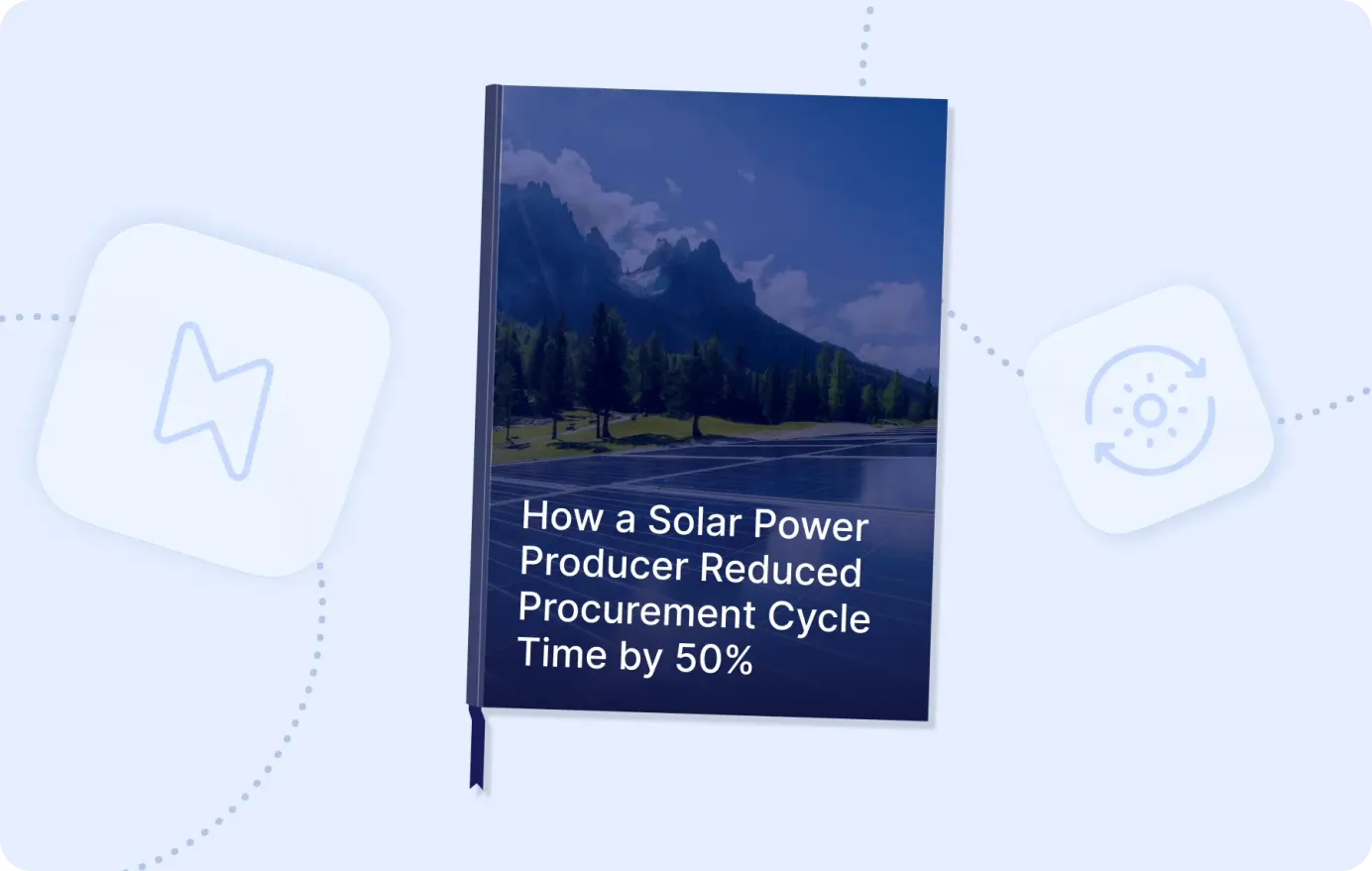
10 min read
How Remilk, a Biotech Startup, Achieved Full Budget Control from Day 1
Remilk was a brand new company without a structured procurement process in place. By implementing software as soon as they started scaling, they automated their workflows and ensured full control of spending. Read more about their journey with procurement software below.
Locations: Israel, United States
Industry: Biotechnology
Website: https://www.remilk.com
Company size: 51-200 employees
Using Precoro since: August 2021
Users: 50-60
Client’s rating of Precoro: 10/10
Featuring: Daphna Shafran, Head of FP&A
Introducing Remilk
Remilk is an Israeli biotechnology startup that is revolutionizing dairy by producing animal-free dairy proteins. With these proteins, they produce real, delicious dairy products, without involving a single animal. It might sound like the beginning of a futuristic novel, but maybe the future is closer than we thought.
Remilk’s dairy products have all the tasty qualities, but without using cows as the “production machines.” They offer benefits that animal dairy can’t boast, such as no cholesterol, lactose, hormones, or antibiotics. Remilk achieves this by copying the gene responsible for the production of milk in cows into yeast. The yeast is then placed in fermenters and produces real milk proteins.
According to Remilk, the production method used to produce their milk proteins emits up to 97% less carbon dioxide compared to the traditional dairy industry, and that is another step towards fulfilling the UN’s goal of achieving net zero emissions by 2050.
The young company was founded in 2019 and grew to a team of around 100 by the beginning of 2023. Remilk is already producing on an industrial-scale and working with customers to launch “Real-dairy — No Cows” to consumers.

To hear the story of Remilk’s success and challenges with suppliers, materials, and transaction volumes while scaling up, we spoke with Daphna Shafran, Head of FP&A. She has more than 20 years of experience in various finance positions in the areas of planning, accounting, consolidation, BI, and finance systems and processes.
Having worked with numerous software tools, Ms. Shafran has witnessed first-hand the value of an efficient process, so she is now tasked with automating procurement at Remilk.
Procurement Before Precoro
Initially, Remilk didn’t have a structured approach to procurement. As is typical with smaller companies, there wasn’t an established P2P process, and purchases were dealt with on a case-by-case basis. There was also no set budget or budget control workflow.
Basically, if someone wanted to purchase something, they went directly to the CEO for approval, then called the supplier and ordered. After supplies arrived, the invoice followed and was posted in accounting. And that was it.
“So, technically, there was no process before Precoro” – Daphna Shafran, Head of FP&A at Remilk.
This process worked fine for them while they didn’t have many invoices. When Remilk started to expand, the financial team realized they had grown out of their manual process and would need to find a way to accommodate a substantial increase in transactions.
There came a point in mid-2021 when the CFO acknowledged that it was time to look for a simple and easy solution to run procurement within. At that moment, Remilk didn’t have an ERP or any other system implemented, so the goal was clear: to find a suitable tool and build a P2P process from scratch.
Designing the Procurement Process
Remilk needed to build a straightforward procurement system which would work as a framework for all employee purchases.
“The idea was to start educating people about how the process should go” – Daphna Shafran, Head of FP&A at Remilk.
They envisioned a budget process at the beginning of each year. Budget limits would then be communicated to employees and taken into consideration for each and every purchase. When it came to how the employees should go about making purchases, Remilk wanted the steps to look something like this:
- An employee decides something should be bought and issues a purchase requisition (PR)
- The PR is approved according to an established approval workflow
- The purchasing team selects a supplier for the item and completes the contract negotiation process
- A purchase order (PO) is created that first goes to the team in charge of budget control
- Once the PO is approved by the relevant people, it gets sent to the supplier
- When the goods or services arrive, a designated employee marks them as received
- The invoice is entered into the system for two-way matching against the PO
- Finally, the invoice goes through its own approval process before being interfaced to accounting booking and being paid
In a nutshell, Remilk was looking to implement a classic P2P process.

Starting with Precoro
Now that they understood what their process should look like, Remilk stakeholders decided to start looking online for a software solution that could tackle the workflow and automate tasks within it. Ms. Shafran expressed that the main criteria they were looking for in a software were that it was simple to use and quick and easy to implement.
After evaluating several options, the CFO eventually booked a demo with Precoro and decided to give it a try. The implementation only took around four weeks, so Precoro quickly became the first comprehensive system that was introduced within Remilk.
It was a very quick and smooth onboarding. Since there was no procurement process in place before Precoro, the implementation team could start fresh and teach people the new process instead of trying to reform some established habits.
“We started from scratch, so everything was an improvement” – Daphna Shafran, Head of FP&A at Remilk.
Ms. Shafran explains that at Remilk they chose the soft start strategy – introducing basic concepts of PR and PO first, and then enhancing the procurement process by implementing budget control and approval flows. From a management perspective, it was a good idea to start slowly and not push everything on employees at once.
Remilk took the time for such a gradual implementation because it made sense for a company that was on the verge of growth. The procurement workflow was being created step-by-step in parallel with carrying out research, increasing activity, and hiring more employees.
From the start of the onboarding process all the way until today, Ms. Shafran works closely with Precoro’s customer success team. Mary Kornieienko, who is Remilk’s dedicated customer success manager, supported the process of setting up and continues to help them customize Precoro to ensure that the company needs are heard and taken into account.
According to Ms. Shafran, professional customer support is another area where Precoro shines, and she rates it a 10 out of 10. Since the beginning of the cooperation to now, Remilk remains content with the signed SLA.
“I worked with many systems. And with Precoro, if you raise something that you would like to change, or you raise an idea, there’s always somebody that listens. And suddenly you see in the Precoro newsletter that it was implemented. So you can really feel that there is somebody that really listens to the user and really takes it into the roadmap” – Daphna Shafran, Head of FP&A at Remilk.
Current Procurement in Numbers
Remilk now uses Precoro for complex procurement management. Ms. Shafran says that all of the company’s purchases go through the system, “from the pen for the office to the lab equipment, services, lawyers, everything.”
In order to control the budget and ensure there’s no maverick spending, every purchase has to be requested and ordered according to the established flow within the system. That’s why up to 50-60% of employees have access to Precoro.
Because Precoro lets you choose the responsibility level for each user by setting up their permissions for documents and modules, Remilk was able to customize employees’ roles for compliance with the company’s procurement policies. Remilk distinguishes their Precoro users into three categories based on the level of daily involvement: “heavy,” “light,” and “approvers.” (Editorial note: Remilk’s internal terminology).
Heavy users are the people from the finance and procurement teams. They can create POs, invoices, and other documents within the P2P process. Light users can open PRs or just review the progress. And approvers do just as their role suggests – they are usually the heads of departments who need to approve documents (POs, PRs, invoices).
To facilitate the use of Precoro in the company, Ms. Shafran and her colleague from the IT department take on the system administrator roles.
Remilk uses separate Precoro entities for its Israel and United States offices. Separate software entities allow the company to avoid confusion when issuing the invoices for each office; this division also makes it easier to maintain visibility over documents and goods flowing inwards and outwards, regardless of their volume.
In total, Remilk currently processes around 500 invoices per month. As for POs, their number is a bit lower than that of invoices. It’s currently about 300 per month, as some are blanket POs that appear in the system as a single order.

Building the P2P Process
Since the initial implementation of Precoro in 2021, Remilk’s finance team has been gradually building a P2P process.
Starting with the Basics
Remilk began by introducing concepts of PR and PO to the employees and implementing basic approval workflows. Once employees understood essential procurement principles, the company added more steps to the approval workflows, which became more complex by the end of 2022. As of today, at least 60% of people in each department can issue a PR, and 5 users from the procurement and financial teams can issue a PO.
In 2023, Remilk uploaded the budgets into the system and made them mandatory. It then became impossible to issue a PO if there wasn’t enough in the budget. “I thought it was going to be a disaster,” confesses Ms. Shafran with a smile, “but it really works.” Now, if people don't have sufficient funds, they know that they need to approach [the] finance [department] for a budget shift.
“People are thinking before they spend money. It's not like: ‘Okay, I want that.’ You need to make sure that you have the funds. I really think budgeting made the P2P very well-controlled.” – Daphna Shafran, Head of FP&A at Remilk.
While at the end of 2022 Remilk was facing the problem of misalignment between invoices and budgets, starting from 2023, every budget is loaded to Precoro and any shift is immediately reflected in the system.
Ms. Shafran is currently training several employees to start using the budget functionality; specifically, they’re running reports and evaluating the purchasing capabilities. “The budget is at the heart of the whole process; it’s a live system,” says the Head of FP&A.
Adding Integrations
Precoro also helped Remilk with automating invoice flows. Initially, the financial team used Precoro’s API connectivity to download invoices to designated storage, after which they were sent to the accounting team to be posted.
It worked this way, partly manually and to a certain extent automated, until the beginning of 2023, when Remilk implemented NetSuite ERP and followed up by integrating it with Precoro. By utilizing the integration, the finance team was able to process invoices automatically and to take spend control a step further.
Remilk now has items, a chart of accounts, and departments synchronized between Precoro and NetSuite. Once the integration was set up, invoices started to flow, and the whole process became more aligned and automated.
Streamlining Cooperation with Suppliers
Remilk was also able to rework their supplier management approach using Precoro’s comprehensive, supplier-focused features.
“We're really trying to leverage the Supplier Portal to bring the work to the supplier. This is a “win win” situation for Remilk and for the suppliers” – Daphna Shafran, Head of FP&A at Remilk.
Remilk has quite a few suppliers that issue numerous invoices for small amounts, and it's time-consuming to load them all into the system. By inviting suppliers to upload their invoices into the system via the dedicated portal, Remilk was able to make the process quicker and smoother.
As Ms. Shafran points out, the Supplier Portal also benefits the suppliers themselves, as it offers more control over their accounts receivable cycle. Instead of sending out the invoice via email and standing by to wait for the payment, suppliers are now able to track the invoices and their statuses in real time.
To bring more efficiency to the P2P process, Remilk is working to increase the number of suppliers using the Portal. The company started to use the supplier registration form. Instead of forwarding questionnaires back and forth to find out all the necessary information about the supplier prior to registration, Remilk can now send onboarding emails. Suppliers are able to register in Precoro by filling in the self-registration form, and that saves substantial time and minimizes human errors on both sides.
Remaining Challenges
Remilk is an Israeli-based company, and there’s still one need that Precoro can’t cover with the out-of-the-box functionality — Optical Character Recognition (OCR) for Hebrew. Precoro currently supports OCR for languages that use the Latin alphabet, but the majority of Remilk’s invoices are in Hebrew.
“It really [could] automate the process even more. If it works, you could really take the time and invest it in analyzing and reviewing – [in doing] quality work instead of manual work,” commented Ms. Shafran after taking a look at the OCR technology. She hopes to incorporate it once the language has been added.
In addition to this, the CEO of Remilk is also looking for ways to gain even better control of the budget. Therefore, Ms. Shafran mentioned that Remilk could benefit from enhanced management dashboards in Precoro.

The Secret to Success
There’s a simple recipe to Remilk’s successful implementation of the Precoro procurement system: they found Precoro just in time and took the opportunity to start from scratch.
“You could actually do whatever you want, because people were not used to some process. It's better to have a very clear start than to come to an existing process and change it” – reflects Ms. Shafran.
It’s important to recognize the need for process standardization and software implementation early on, as introducing any innovation at the beginning of the company development timeline means less resistance and more flexibility.
As for companies who missed this window initially, it’s never too late to take a step back and reassess current procurement practices. Stakeholders, together with financial professionals, can start by redefining business priorities, expected results, internal constraints, and market limitations. Afterward, they can prepare procurement strategies and build purchasing workflows that would originate in the actual business needs rather than habit.
Before Precoro
- There was no established P2P process
- Employees used to ask the CEO for approval of every purchase
- Orders and invoices were managed in Excel
- The supplier onboarding process was time-consuming and prone to error
With Precoro
- Employees follow a clear P2P process
- Maverick spend is eliminated
- Employees purchase strictly within the defined budget limits
- Approval workflows are transparent and easy to follow
- Management has immediate access to budget analytics and reports
- Supplier management is fast and efficient









